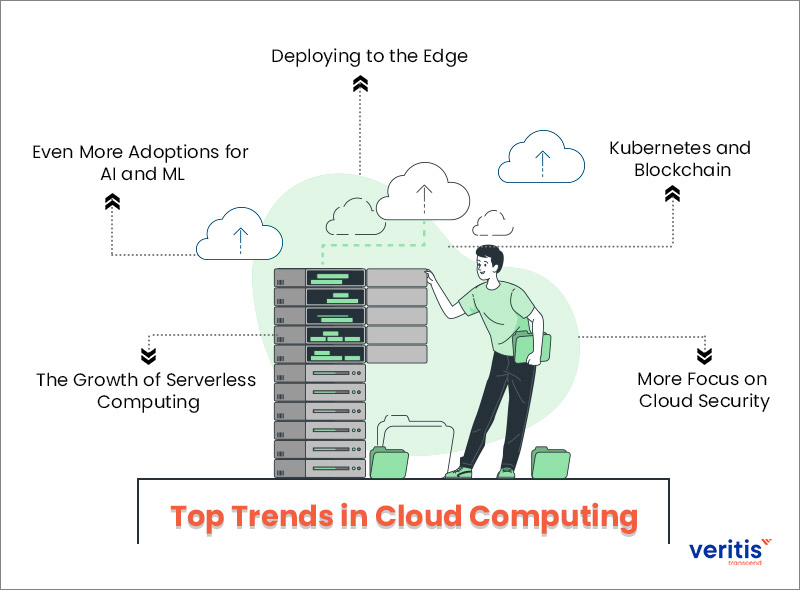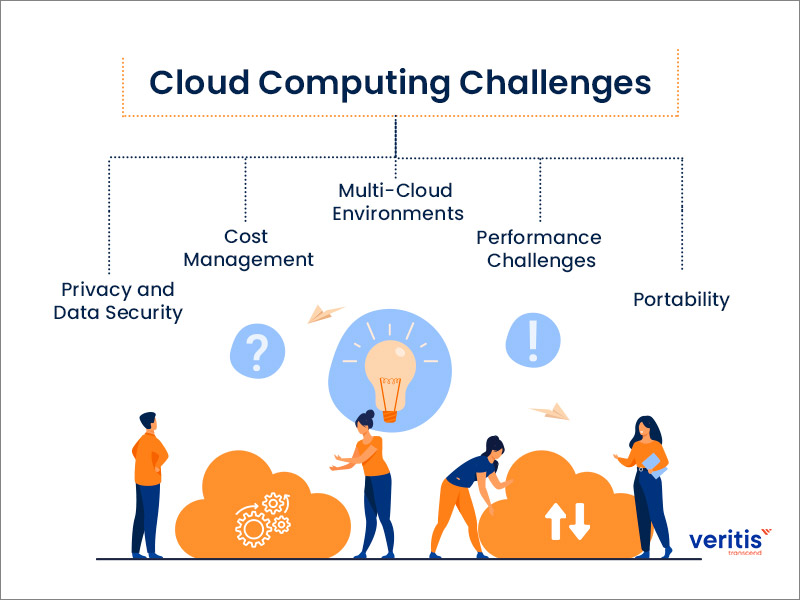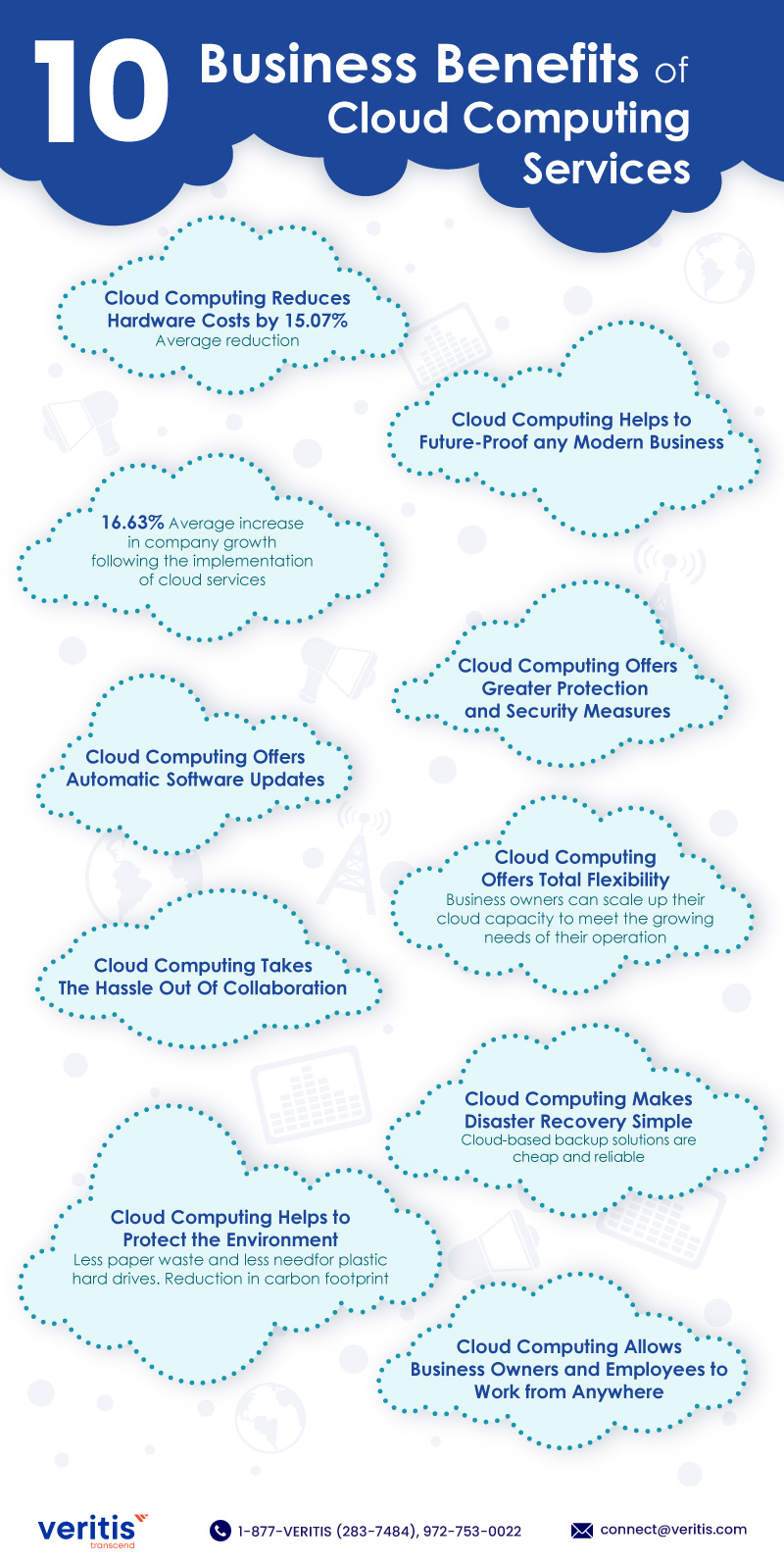
Table of contents
Observing how our world has changed from traditional infrastructures to becoming more cloud-based. Yes! We are discussing the omnipresent “cloud.” Cloud computing has been there for almost two decades, and despite statistics showing commercial savings, cost-benefit analyses were never conclusive. Nevertheless, it has changed how companies communicate, store, and exchange information. It has also changed how they manage computing resources.
Cloud computing provides modern organizations with cost savings, scalability, flexibility, efficiency, and security. Instead of using internal systems, 70% of our enterprises operate in the cloud. You may have noticed that buying flight tickets or accessing medical records is no longer a Herculean task. That’s all due to the cloud network services.
Projections from IDC suggest a continued upward trajectory, with a 21.7% increase in spending on public cloud services anticipated in 2023, reaching a staggering USD 597.3 billion (“Worldwide Public Cloud Spending Forecast, 2022-2026”).
In the first quarter of 2023, the global market share of the foremost cloud infrastructure service providers collectively amounted to USD 63 billion, according to insights from Synergy Research Group in their “Q1 2023: Public Cloud Market Share, Revenue, and Growth Analysis.”
Cloud adoption is widespread, with 75% of organizations already leveraging cloud based solutions for some of their workloads, as highlighted in Flexera’s “2023 State of the Cloud Report.” Furthermore, a significant shift is expected, as 58% of organizations plan to transition more than half of their workloads to the cloud within the next 12-18 months.
CloudZero’s “101 Shocking Cloud Computing Statistics (UPDATED 2023) presents a more ambitious outlook,” indicating that 31% of organizations anticipate running 75% of their workloads in the cloud by the year 2023.
IT leaders are driving cloud spending trends in response to the evolving macroeconomic landscape. Cloud Zero’s statistics reveal that 41.4% of IT leaders are intensifying their use of cloud-based services and products due to the current economic conditions.
Additionally, 33.4% of IT leaders plan to migrate from legacy enterprise software to cloud-based tools, reflecting a strategic shift toward modern and scalable solutions. A substantial portion of IT leaders, 32.8%, is actively migrating on-premises workloads to the cloud, underlining the ongoing transformation of infrastructure and services in the IT era.
Users worldwide access an open pool of resources, including apps, services, servers, data, and computer networks. A privately held cloud or a third-party server is used to make it possible. It improves data access and eliminates inconsistency in subsequent updates. Additionally, a small amount of administration is necessary.

Cloud services provide flexibility, excellent data storage, improved employee synchronization, and data security. As a result, organizations can make more intelligent decisions to develop and grow.
Before delving deep, let’s start with a brief discussion of the general characteristics and fundamental concepts and the future of cloud computing.
What is Cloud Computing?
Delivering computing services across a network is referred to as cloud computing. This is because massive volumes of data are stored, managed, and processed through a network of shared and different servers (hosted on the Internet other than a local server or PC), reducing the cost of IT infrastructure.
Cloud integration has immense possibilities and scope. Therefore, the IT industry is divided into three groups.
1) Software as a Service (SaaS)
Software is owned, distributed, and remotely managed by one or more providers. Initially, Software-as-a-Service, or SaaS, is a well-liked method for accessing and paying for software. SaaS organizations allow you to rent hosted software rather than install it on your servers. Usually, a subscription fee is paid monthly or annually.
2) Infrastructure as a Service (IaaS)
Customers have on-demand access to computing resources owned and hosted by providers and are accompanied by storage and networking capabilities.
3) Platform as a Service (PaaS)
PaaS is an extensive group of middleware (application infrastructure) services. These services include business process management, integration, database, and application platforms.
This process deviates from conventional on-premise computing using a local server or PC. However, more and more users are not using these conventional techniques.
Based on a survey conducted by Foundry in 2023, it is estimated that 94% of enterprises currently have at least one application or component of their computing infrastructure hosted in the cloud. This marks a notable increase from the 84% reported in 2022, underscoring the ongoing and widespread adoption of the future of cloud computing within the business field.
Over the next 18 months, projections indicate that an additional 5% of companies will transition to a fully cloud-based environment. This foresight suggests that by the conclusion of 2024, nearly 99% of enterprises will have integrated some IT infrastructure into cloud platforms. This trend underscores the continuous momentum and acceptance of cloud technologies among businesses seeking to optimize and modernize their computing environments.
Useful link: What is Cloud Computing?
Top Cloud Computing Trends

As more businesses rely on on-demand IT for anything from accounting software to full-fledged IaaS, PaaS, and SaaS solutions, cloud integration remains a vital resource across multiple industries. Let’s look at five of the cloud computing trends you can expect to witness in the future of cloud computing.
1) The Growth of Serverless Computing
Serverless computing is a cloud approach where the customer doesn’t have to deal with infrastructure administration and server provisioning. Instead, the cloud service providers manage the supporting infrastructure and distribute computing power following the demand.
What are the advantages of cloud computing is meant to be a business purpose and serverless computing provides many advantages to a business:
- You don’t pay a set price for a certain amount of bandwidth or storage. Instead, you can go with the pay-as-you-go model.
- The internal team is not responsible for managing the servers.
- The team can spend more time developing and developing new concepts because internal developers don’t have to provision complicated server clusters.
- There is no risk of under- or over-provisioning because serverless platforms scale autonomously without any help from the internal staff.
Serverless computing is rapidly growing at a quick pace. Expect to see more businesses use serverless solutions in the upcoming year as it offers yet another way to improve team agility and save costs.
“According to current predictions, between 2023 and 2026, demand for serverless technologies will increase by 22.6%.”
2) Even More Adoptions for AI and ML
All machine learning and AI platforms need a lot of processing power and data bandwidth, and the cloud is the most cost-effective approach to getting these resources. AI and ML technologies complement each other.
AI guides cloud IT services in managing data while obtaining reliable insights into user behavior, trends in cloud computing, preferences, etc. Cloud computing security increases the affordability and accessibility of AI. Cloud computing plays a vital role in creating two emerging AI technologies.
Creative Algorithms:
These software tools use machine learning to produce everything from artificial data to works of art. These algorithms can also use to train different AI systems.
Language Modeling:
Programs that understand human languages more accurately are a technology that is expected to change how companies communicate with their customers.
Cloud computing for business will be crucial in delivering these services to customers and providing the necessary infrastructure for programs with high computational demands.
Not only big companies profit from AI’s usage of cloud network services, but Cloud computing service models will become a popular entry point for high-end AI solutions among small and low-tech organizations. Without the cloud, startups, and businesses with smaller resources could not use advanced ML and AI functionalities.
Moreover, cloud computing service providers have allowed companies of all sizes and sorts to create AI/ML products. Since these AI/ML platforms demand a lot of processing power and bandwidth, cloud migration optimization will unavoidably play a significant role in that expansion.
“Consequently, experts predict that the AI market size will grow to USD 850.61 billion by 2028. “
3) Deploying to the Edge
Edge computing is a new method of processing data that doesn’t conduct activities inside a data center. Instead, processing and storing data occurs on specialized hardware near the network’s edge.
Every edge server has different storage capabilities, networking, and computing, allowing it to perform the following tasks:
- Security
- Network switching and routing
- Load balancing
In 2023, the trend of integrating edge and trends in cloud computing is gaining momentum, forming what is known as the edge-cloud continuum. This synergistic approach enables organizations to leverage both technologies’ strengths for optimal performance, efficiency, and flexibility.
Using both cloud and edge technology allows IT environments to benefit of cloud computing from the cloud while also offering:
- Reduced bandwidth use
- Data processing almost instantly
- Low to no response time lag
- Reduced data transmission rates
Edge computing and Secure Access Service Edge (SASE) are two critical technologies poised to play an increasingly important role in the IT landscape in 2023. As organizations seek ways to improve efficiency, security, and agility, edge computing and SASE are becoming increasingly attractive solutions.
Edge computing is bringing computing resources closer to the data source, where it is needed. This can provide several benefits, including reduced latency, improved performance, and increased security. In 2022, it was estimated that at least 40% of organizations would look to incorporate edge computing into their IT strategies.
This trend is expected to continue in 2023, with an estimated 44% of organizations adopting edge computing. Several factors drive this growth, including the increasing adoption of IoT devices, the need for real-time data processing, and the growing importance of edge security.
With the help of this security architecture, a business may monitor and regulate access to applications of cloud computing and services, on-premises infrastructure, and end-user devices. SASE guides in upholding a high standard of security and compliance, two of the primary issues with edge computing.
4) Kubernetes and Blockchain
Kubernetes is a technology that offers a tamper-proof digital ledger that can record data without depending on a centralized authority. Blockchain technology is a game-changer but has scaling issues, particularly massive data management and storage.
A blockchain environment can scale quickly with the help of Kubernetes (K8s), an open-source technology for automating deployments and scaling programs. With several containers running for a single essential service, K8s also offer high availability.
Enterprises will carry on pushing the boundaries of blockchain and K8s in 2022 since they work so well together.
5) More Focus on Cloud Security
Compliance, privacy, and integration problems are the main barriers to cloud trends adoption. In response, cloud service providers are providing enhanced cloud security trends feature.
In the feature, we will witness huge demand for:
Secure Access Service Edge (SASE): SASE allows users to manage and regulate access across end-user devices, on-premise IT, and cloud apps.
Cloud-Based Disaster Recovery (DR): A business can use cloud disaster recovery to back up data and create a standby IT environment that can take over if the primary infrastructure fails.
A primary priority in 2023 will also be gaining visibility across many cloud application platforms. Additionally, business owners desire transparency across all IT environments to close gaps resulting in compliance infringements or cyberattacks.
Useful link: What is a Cloud Consultant?
Cloud Computing Challenges

Emerging cloud computing technologies have created numerous challenges for handling data and information. Therefore, if you decide to implement cloud infrastructure services, here are some challenges of cloud computing and risks you can encounter.
1) Privacy and Data Security
Privacy and data security are the two most concerning factors to trends in cloud computing models. Cloud storage of user or business data is vital and private. Encryption, security hardware, and software can solve security and privacy problems.
Identity theft, data breaches, malware infections, and other security issues on the cloud lead to a decline in user confidence in your applications of cloud computing. This can lead to a heavy loss in revenue alongside stature and reputation. In addition, dealing with cloud computing for small businesses requires sending and receiving a massive amount of data quickly and is vulnerable to data leaks.
2) Cost Management
Without significant investments in new hardware, a company can rapidly increase its processing capacity in the cloud trends. Instead, businesses can use public carriers’ pay-as-you-go strategies to get additional processing. Most of the all-cloud providers offer a “pay-as-you-go” model. It brings down the total cost of the resources being used. However, defining and forecasting quantities and costs can occasionally be challenging due to cloud computing services’ on-demand and scalable nature.
3) Multi-Cloud Environments
Companies now have more options at their disposal, so they no longer depend only on one cloud provider but on a number of them. Nearly 84% of these organizations depend on several clouds, most of which employ hybrid cloud strategies. The infrastructure team frequently finds this to be hindering and challenging to manage. The process frequently ends up being extremely complicated for the IT team due to the variations among various cloud infrastructure services providers
4) Performance Challenges
Performance is a crucial factor when considering cloud based solutions. If the cloud performs poorly, users may stop using it, and businesses may suffer. For instance, the minimum latency when loading an app or website might cause a significant decrease in the number of users. This latency may result from ineffective load balancing, which indicates that the server cannot divide incoming traffic effectively for the optimal user experience. Fault tolerance, which refers to the ability for operations to continue even when one or more components fail, also presents difficulties.
5) Portability
Application migration from one cloud provider to another should be simple, which is another challenge for cloud computing applications. Vendor lock-in must be avoided. It is currently not practicable because each cloud provider utilizes a separate standard language for their systems.
Useful link: What is Cloud Computing Security?
Characteristics of Cloud Computing
With a history spanning several decades, cloud computing has evolved into a contemporary infrastructure that boasts a range of characteristics, delivering significant advantages to businesses of various scales. Among the key attributes of cloud computing applications are the following:
1) Workload Resilience
Cloud Service Providers (CSPs) frequently employ redundant resources to guarantee robust storage and maintain the continuity of users’ critical workloads, often spanning multiple global regions.
2) Multi-tenancy and Resource Pooling
Multi-tenancy enables multiple customers to share joint physical infrastructures or applications of cloud computing while ensuring the privacy and security of their respective data. Cloud providers efficiently cater to multiple customers using the same physical resources through resource pooling. The resource pools maintained by cloud providers need to be sizable and adaptable to meet the diverse requirements of multiple customers effectively.
3) Self-service Provisioning
End users can instantly deploy compute resources for various workloads as needed. This involves provisioning computing capabilities like server time and network storage, eliminating the conventional necessity for IT administrators to handle the provisioning and management of compute resources.
4) Broad Network Access
Users can access cloud data or upload information to the cloud from any location and with any internet-enabled device, providing a seamless and convenient experience.
5) Migration Flexibility
Organizations can transfer specific workloads to or from the cloud or between different cloud platforms, either manually based on preference or automatically, to enhance cost-effectiveness and take advantage of emerging services.
Benefits of Cloud Computing

There are various advantages of cloud computing applications, and some of them are
1) Cost Savings
Suppose users worry about the cost of switching to cloud computing infrastructure. It’s not only just you. The initial expense of adopting a cloud-based solution concerns 20% of companies. However, those attempting to balance the benefits and drawbacks of using the cloud trends need to consider more than just the initial cost; they also need to consider ROI.
2) Security
When implementing a cloud-based solution, many companies are concerned about security. After all, how can you be sure that files, programs, and other data are protected if they are not housed securely onsite? What stops a cybercriminal from doing the same thing if you can access your data remotely? Well, quite a bit.
One of the responsibilities of cloud based solutions is to monitor security properly. This is substantially more effective than a standard internal system. where a company must divide its resources among a variety of IT issues, security being only one of them.
3) Rapid Deployment and High Speed
The agility and speed of software development have changed due to the quick creation of new cloud computing platforms. Developers may quickly test new concepts and create application architecture without on-site hardware constraints.
4) Scalability
Distinct businesses have different IT requirements; a massive company with more than 1000 employees will have different needs than a startup. Implementing the cloud computing platform is a fantastic solution since it enables companies to scale up or down their IT departments quickly and efficiently.
5) Backup and Restore Data
Data storage on the cloud based solutions is not limited by available space, which is beneficial for backup and restore operations. End-user data evolve and must be tracked for regulations or compliance requirements. If a rollback or recovery is required, older software versions can be saved for later stages.
Business Benefits of Cloud Computing Services (Infographic)

Conclusion
It doesn’t take long to understand why more people use cloud computing every year. Companies know the advantages, trends, and challenges of cloud computing implementation and how it impacts their income, security, and teamwork.
An enterprise can avoid several issues plaguing companies that rely on on-premises technology by using cloud platform solutions if users have any queries regarding implementing the cloud efficiently for their business, improving cloud performance, and reducing costs. Then it’s time to contact Veritis.
Veritis, the Stevie Awards and Globee Business Award winner, provides companies with cost-effective cloud services to help them change their IT environments. In addition, our expert team offers cutting-edge cloud computing consulting services that enable businesses to increase their productivity significantly.
Resolve Your Cloud Computing Challenges
Additional Resources: